CHEMICAL IDENTIFICATION
-
RTECS NUMBER :
-
KJ2975000
-
CHEMICAL NAME :
-
Ethane, 1,1,1-trichloro-
-
CAS REGISTRY NUMBER :
-
71-55-6
-
BEILSTEIN REFERENCE NO. :
-
1731614
-
LAST UPDATED :
-
199712
-
DATA ITEMS CITED :
-
89
-
MOLECULAR FORMULA :
-
C2-H3-Cl3
-
MOLECULAR WEIGHT :
-
133.40
-
WISWESSER LINE NOTATION :
-
GXGG1
HEALTH HAZARD DATA
ACUTE TOXICITY DATA
-
TYPE OF TEST :
-
Standard Draize test
-
ROUTE OF EXPOSURE :
-
Administration into the eye
-
SPECIES OBSERVED :
-
Human - man
-
TYPE OF TEST :
-
Standard Draize test
-
ROUTE OF EXPOSURE :
-
Administration onto the skin
-
SPECIES OBSERVED :
-
Rodent - rabbit
-
TYPE OF TEST :
-
Standard Draize test
-
ROUTE OF EXPOSURE :
-
Administration onto the skin
-
SPECIES OBSERVED :
-
Rodent - rabbit
-
TYPE OF TEST :
-
Standard Draize test
-
ROUTE OF EXPOSURE :
-
Administration into the eye
-
SPECIES OBSERVED :
-
Rodent - rabbit
-
TYPE OF TEST :
-
Standard Draize test
-
ROUTE OF EXPOSURE :
-
Administration into the eye
-
SPECIES OBSERVED :
-
Rodent - rabbit
-
TYPE OF TEST :
-
TCLo - Lowest published toxic concentration
-
ROUTE OF EXPOSURE :
-
Inhalation
-
SPECIES OBSERVED :
-
Human - man
-
DOSE/DURATION :
-
350 ppm
-
TOXIC EFFECTS :
-
Behavioral - hallucinations, distorted perceptions Behavioral - changes in motor activity (specific assay) Behavioral - changes in psychophysiological tests
-
TYPE OF TEST :
-
TDLo - Lowest published toxic dose
-
ROUTE OF EXPOSURE :
-
Oral
-
SPECIES OBSERVED :
-
Human
-
DOSE/DURATION :
-
670 mg/kg
-
TOXIC EFFECTS :
-
Gastrointestinal - hypermotility, diarrhea Gastrointestinal - nausea or vomiting Gastrointestinal - other changes
-
TYPE OF TEST :
-
TCLo - Lowest published toxic concentration
-
ROUTE OF EXPOSURE :
-
Inhalation
-
SPECIES OBSERVED :
-
Human
-
DOSE/DURATION :
-
920 ppm/70M
-
TOXIC EFFECTS :
-
Behavioral - changes in motor activity (specific assay) Sense Organs and Special Senses (Eye) - conjunctive irritation
-
TYPE OF TEST :
-
TCLo - Lowest published toxic concentration
-
ROUTE OF EXPOSURE :
-
Inhalation
-
SPECIES OBSERVED :
-
Human - man
-
DOSE/DURATION :
-
200 ppm/4H
-
TOXIC EFFECTS :
-
Behavioral - changes in motor activity (specific assay) Behavioral - irritability
-
TYPE OF TEST :
-
LD50 - Lethal dose, 50 percent kill
-
ROUTE OF EXPOSURE :
-
Oral
-
SPECIES OBSERVED :
-
Rodent - rat
-
DOSE/DURATION :
-
9600 mg/kg
-
TOXIC EFFECTS :
-
Cardiac - pulse rate Nutritional and Gross Metabolic - weight loss or decreased weight gain
-
TYPE OF TEST :
-
LC50 - Lethal concentration, 50 percent kill
-
ROUTE OF EXPOSURE :
-
Inhalation
-
SPECIES OBSERVED :
-
Rodent - rat
-
DOSE/DURATION :
-
18000 ppm/4H
-
TOXIC EFFECTS :
-
Details of toxic effects not reported other than lethal dose value
-
TYPE OF TEST :
-
LD50 - Lethal dose, 50 percent kill
-
ROUTE OF EXPOSURE :
-
Intraperitoneal
-
SPECIES OBSERVED :
-
Rodent - rat
-
DOSE/DURATION :
-
3593 mg/kg
-
TOXIC EFFECTS :
-
Details of toxic effects not reported other than lethal dose value
-
TYPE OF TEST :
-
LD50 - Lethal dose, 50 percent kill
-
ROUTE OF EXPOSURE :
-
Oral
-
SPECIES OBSERVED :
-
Rodent - mouse
-
DOSE/DURATION :
-
6 gm/kg
-
TOXIC EFFECTS :
-
Cardiac - pulse rate Nutritional and Gross Metabolic - weight loss or decreased weight gain
-
TYPE OF TEST :
-
LC50 - Lethal concentration, 50 percent kill
-
ROUTE OF EXPOSURE :
-
Inhalation
-
SPECIES OBSERVED :
-
Rodent - mouse
-
DOSE/DURATION :
-
3911 ppm/2H
-
TOXIC EFFECTS :
-
Behavioral - excitement
-
TYPE OF TEST :
-
LD50 - Lethal dose, 50 percent kill
-
ROUTE OF EXPOSURE :
-
Intraperitoneal
-
SPECIES OBSERVED :
-
Rodent - mouse
-
DOSE/DURATION :
-
2568 mg/kg
-
TOXIC EFFECTS :
-
Details of toxic effects not reported other than lethal dose value
-
TYPE OF TEST :
-
LD50 - Lethal dose, 50 percent kill
-
ROUTE OF EXPOSURE :
-
Subcutaneous
-
SPECIES OBSERVED :
-
Rodent - mouse
-
DOSE/DURATION :
-
16 gm/kg
-
TOXIC EFFECTS :
-
Behavioral - sleep Behavioral - ataxia
-
TYPE OF TEST :
-
LD50 - Lethal dose, 50 percent kill
-
ROUTE OF EXPOSURE :
-
Oral
-
SPECIES OBSERVED :
-
Mammal - dog
-
DOSE/DURATION :
-
750 mg/kg
-
TOXIC EFFECTS :
-
Details of toxic effects not reported other than lethal dose value
-
TYPE OF TEST :
-
LD50 - Lethal dose, 50 percent kill
-
ROUTE OF EXPOSURE :
-
Intraperitoneal
-
SPECIES OBSERVED :
-
Mammal - dog
-
DOSE/DURATION :
-
3100 mg/kg
-
TOXIC EFFECTS :
-
Liver - liver function tests impaired
-
TYPE OF TEST :
-
LDLo - Lowest published lethal dose
-
ROUTE OF EXPOSURE :
-
Intravenous
-
SPECIES OBSERVED :
-
Mammal - dog
-
DOSE/DURATION :
-
95 mg/kg
-
TOXIC EFFECTS :
-
Details of toxic effects not reported other than lethal dose value
-
TYPE OF TEST :
-
LC - Lethal concentration
-
ROUTE OF EXPOSURE :
-
Inhalation
-
SPECIES OBSERVED :
-
Primate - monkey
-
DOSE/DURATION :
-
>5000 ppm/7H
-
TOXIC EFFECTS :
-
Behavioral - tremor Behavioral - ataxia
-
TYPE OF TEST :
-
LC50 - Lethal concentration, 50 percent kill
-
ROUTE OF EXPOSURE :
-
Inhalation
-
SPECIES OBSERVED :
-
Mammal - cat
-
DOSE/DURATION :
-
24400 mg/m3
-
TOXIC EFFECTS :
-
Details of toxic effects not reported other than lethal dose value
-
TYPE OF TEST :
-
LD50 - Lethal dose, 50 percent kill
-
ROUTE OF EXPOSURE :
-
Oral
-
SPECIES OBSERVED :
-
Rodent - rabbit
-
DOSE/DURATION :
-
5660 mg/kg
-
TOXIC EFFECTS :
-
Details of toxic effects not reported other than lethal dose value
-
TYPE OF TEST :
-
LDLo - Lowest published lethal dose
-
ROUTE OF EXPOSURE :
-
Administration onto the skin
-
SPECIES OBSERVED :
-
Rodent - rabbit
-
DOSE/DURATION :
-
15800 mg/kg
-
TOXIC EFFECTS :
-
Details of toxic effects not reported other than lethal dose value
-
TYPE OF TEST :
-
LDLo - Lowest published lethal dose
-
ROUTE OF EXPOSURE :
-
Subcutaneous
-
SPECIES OBSERVED :
-
Rodent - rabbit
-
DOSE/DURATION :
-
500 mg/kg
-
TOXIC EFFECTS :
-
Details of toxic effects not reported other than lethal dose value
-
TYPE OF TEST :
-
LD50 - Lethal dose, 50 percent kill
-
ROUTE OF EXPOSURE :
-
Oral
-
SPECIES OBSERVED :
-
Rodent - guinea pig
-
DOSE/DURATION :
-
9470 mg/kg
-
TOXIC EFFECTS :
-
Details of toxic effects not reported other than lethal dose value
-
TYPE OF TEST :
-
TCLo - Lowest published toxic concentration
-
ROUTE OF EXPOSURE :
-
Inhalation
-
SPECIES OBSERVED :
-
Rodent - rat
-
DOSE/DURATION :
-
10000 ppm/1H/13W-I
-
TOXIC EFFECTS :
-
Liver - other changes
-
TYPE OF TEST :
-
TCLo - Lowest published toxic concentration
-
ROUTE OF EXPOSURE :
-
Inhalation
-
SPECIES OBSERVED :
-
Rodent - guinea pig
-
DOSE/DURATION :
-
1000 ppm/1H/13W-I
-
TOXIC EFFECTS :
-
Liver - other changes
-
TYPE OF TEST :
-
TCLo - Lowest published toxic concentration
-
ROUTE OF EXPOSURE :
-
Inhalation
-
SPECIES OBSERVED :
-
Rodent - guinea pig
-
DOSE/DURATION :
-
3000 ppm/7H/29D-I
-
TOXIC EFFECTS :
-
Nutritional and Gross Metabolic - weight loss or decreased weight gain
-
TYPE OF TEST :
-
TCLo - Lowest published toxic concentration
-
ROUTE OF EXPOSURE :
-
Inhalation
-
SPECIES OBSERVED :
-
Rodent - guinea pig
-
DOSE/DURATION :
-
650 ppm/7H/58D-I
-
TOXIC EFFECTS :
-
Nutritional and Gross Metabolic - weight loss or decreased weight gain
-
TYPE OF TEST :
-
TDLo - Lowest published toxic dose
-
ROUTE OF EXPOSURE :
-
Oral
-
DOSE :
-
43 mg/kg
-
SEX/DURATION :
-
female 1-22 day(s) after conception lactating female 21 day(s) post-birth
-
TOXIC EFFECTS :
-
Reproductive - Specific Developmental Abnormalities - cardiovascular (circulatory) system
-
TYPE OF TEST :
-
TCLo - Lowest published toxic concentration
-
ROUTE OF EXPOSURE :
-
Inhalation
-
DOSE :
-
2100 ppm/6H
-
SEX/DURATION :
-
female 1-20 day(s) after conception
-
TOXIC EFFECTS :
-
Reproductive - Effects on Embryo or Fetus - fetotoxicity (except death, e.g., stunted fetus)
MUTATION DATA
-
TYPE OF TEST :
-
Cytogenetic analysis
-
TEST SYSTEM :
-
Rodent - hamster Ovary
-
REFERENCE :
-
EMMUEG Environmental and Molecular Mutagenesis. (Alan R. Liss, Inc., 41 E. 11th St., New York, NY 10003) V.10- 1987- Volume(issue)/page/year: 10(Suppl 10),1,1987 *** REVIEWS *** ACGIH TLV-Not classifiable as a human carcinogen DTLVS* The Threshold Limit Values (TLVs) and Biological Exposure Indices (BEIs) booklet issues by American Conference of Governmental Industrial Hygienists (ACGIH), Cincinnati, OH, 1996 Volume(issue)/page/year: TLV/BEI,1997 ACGIH TLV-STEL 2460 mg/m3 (450 ppm) DTLVS* The Threshold Limit Values (TLVs) and Biological Exposure Indices (BEIs) booklet issues by American Conference of Governmental Industrial Hygienists (ACGIH), Cincinnati, OH, 1996 Volume(issue)/page/year: TLV/BEI,1997 ACGIH TLV-TWA 1910 mg/m3 (350 ppm) DTLVS* The Threshold Limit Values (TLVs) and Biological Exposure Indices (BEIs) booklet issues by American Conference of Governmental Industrial Hygienists (ACGIH), Cincinnati, OH, 1996 Volume(issue)/page/year: TLV/BEI,1997 IARC Cancer Review:Animal Inadequate Evidence IMEMDT IARC Monographs on the Evaluation of Carcinogenic Risk of Chemicals to Man. (WHO Publications Centre USA, 49 Sheridan Ave., Albany, NY 12210) V.1- 1972- Volume(issue)/page/year: 20,515,1979 IARC Cancer Review:Human No Adequate Data IMEMDT IARC Monographs on the Evaluation of Carcinogenic Risk of Chemicals to Man. (WHO Publications Centre USA, 49 Sheridan Ave., Albany, NY 12210) V.1- 1972- Volume(issue)/page/year: 20,515,1979 IARC Cancer Review:Group 3 IMSUDL IARC Monographs, Supplement. (WHO Publications Centre USA, 49 Sheridan Ave., Albany, NY 12210) No.1- 1979- Volume(issue)/page/year: 7,56,1987 TOXICOLOGY REVIEW FAZMAE Fortschritte der Arzneimittelforschung. Progress in Drug Research. (Birkhauser Boston, Inc., c/o Springer-Verlag New York, 44 Hartz Way, Secaucus, NJ 07094) V.1- 1959- Volume(issue)/page/year: 18,365,1974 TOXICOLOGY REVIEW EATR** U.S. Army, Edgewood Arsenal Technical Report. (Aberdeen Proving Ground, MD 21010) Volume(issue)/page/year: EB-TR-75047 TOXICOLOGY REVIEW AIHAAP American Industrial Hygiene Association Journal. (AIHA, 475 Wolf Ledges Pkwy., Akron, OH 44311) V.19- 1958- Volume(issue)/page/year: 40(3),A46,1979 *** U.S. STANDARDS AND REGULATIONS *** EPA FIFRA 1988 PESTICIDE SUBJECT TO REGISTRATION OR RE-REGISTRATION FEREAC Federal Register. (U.S. Government Printing Office, Supt. of Documents, Washington, DC 20402) V.1- 1936- Volume(issue)/page/year: 54,7740,1989 MSHA STANDARD-air:TWA 350 ppm (1900 mg/m3) DTLVS* The Threshold Limit Values (TLVs) and Biological Exposure Indices (BEIs) booklet issues by American Conference of Governmental Industrial Hygienists (ACGIH), Cincinnati, OH, 1996 Volume(issue)/page/year: 3,161,1971 OSHA PEL (Gen Indu):8H TWA 350 ppm (1900 mg/m3) CFRGBR Code of Federal Regulations. (U.S. Government Printing Office, Supt. of Documents, Washington, DC 20402) Volume(issue)/page/year: 29,1910.1000,1994 OSHA PEL (Construc):8H TWA 350 ppm (1900 mg/m3) CFRGBR Code of Federal Regulations. (U.S. Government Printing Office, Supt. of Documents, Washington, DC 20402) Volume(issue)/page/year: 29,1926.55,1994 OSHA PEL (Shipyard):8H TWA 350 ppm (1900 mg/m3) CFRGBR Code of Federal Regulations. (U.S. Government Printing Office, Supt. of Documents, Washington, DC 20402) Volume(issue)/page/year: 29,1915.1000,1993 OSHA PEL (Fed Cont):8H TWA 350 ppm (1900 mg/m3) CFRGBR Code of Federal Regulations. (U.S. Government Printing Office, Supt. of Documents, Washington, DC 20402) Volume(issue)/page/year: 41,50-204.50,1994 *** OCCUPATIONAL EXPOSURE LIMITS *** OEL-AUSTRALIA:TWA 125 ppm (680 mg/m3) JAN 1993 OEL-BELGIUM:TWA 350 ppm (1910 mg/m3);STEL 450 ppm (2460 mg/m3) JAN 1993 OEL-DENMARK:TWA 100 ppm (540 mg/m3) JAN 1993 OEL-FINLAND:TWA 100 ppm (540 mg/m3);STEL 250 ppm (1400 mg/m3) JAN 1993 OEL-FRANCE:TWA 300 ppm (1650 mg/m3);STEL 450 ppm (2500 mg/m3) JAN 1993 OEL-GERMANY:TWA 200 ppm (1080 mg/m3) JAN 1993 OEL-HUNGARY:TWA 100 mg/m3;STEL 300 mg/m3;Skin JAN 1993 OEL-JAPAN:TWA 200 ppm (1100 mg/m3) JAN 1993 OEL-THE NETHERLANDS:TWA 200 ppm (1080 mg/m3);STEL 500 ppm JAN 1993 OEL-THE PHILIPPINES:TWA 350 ppm (1900 mg/m3) JAN 1993 OEL-RUSSIA:TWA 200 ppm;STEL 20 mg/m3 JAN 1993 OEL-SWEDEN:TWA 50 ppm (300 mg/m3);STEL 90 ppm (500 mg/m3) JAN 1993 OEL-SWITZERLAND:TWA 200 ppm (1080 mg/m3);STEL 1000 ppm JAN 1993 OEL-TURKEY:TWA 350 ppm (1900 mg/m3) JAN 1993 OEL-UNITED KINGDOM:TWA 350 ppm (1900 mg/m3);STEL 450 ppm JAN 1993 OEL IN BULGARIA, COLOMBIA, JORDAN, KOREA check ACGIH TLV OEL IN NEW ZEALAND, SINGAPORE, VIETNAM check ACGIH TLV *** NIOSH STANDARDS DEVELOPMENT AND SURVEILLANCE DATA *** NIOSH RECOMMENDED EXPOSURE LEVEL (REL) : NIOSH REL TO 1,1,1-TRICHLOROETHANE-air:CL 350 ppm/15M REFERENCE : NIOSH* National Institute for Occupational Safety and Health, U.S. Dept. of Health, Education, and Welfare, Reports and Memoranda. Volume(issue)/page/year: DHHS #92-100,1992 NIOSH OCCUPATIONAL EXPOSURE SURVEY DATA : NOHS - National Occupational Hazard Survey (1974) NOHS Hazard Code - 46970 No. of Facilities: 109850 (estimated) No. of Industries: 412 No. of Occupations: 205 No. of Employees: 1511801 (estimated) NOES - National Occupational Exposure Survey (1983) NOES Hazard Code - 46970 No. of Facilities: 120527 (estimated) No. of Industries: 417 No. of Occupations: 243 No. of Employees: 2528300 (estimated) No. of Female Employees: 762399 (estimated)
|



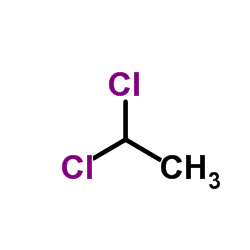 CAS#:75-34-3
CAS#:75-34-3 CAS#:75-35-4
CAS#:75-35-4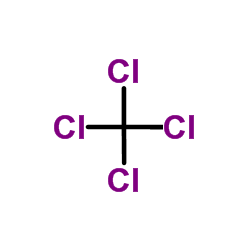 CAS#:56-23-5
CAS#:56-23-5 CAS#:74-88-4
CAS#:74-88-4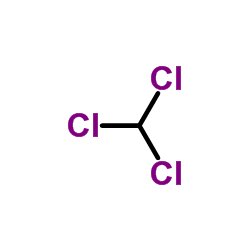 CAS#:67-66-3
CAS#:67-66-3 CAS#:157-22-2
CAS#:157-22-2 CAS#:7446-70-0
CAS#:7446-70-0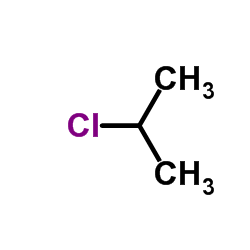 CAS#:75-29-6
CAS#:75-29-6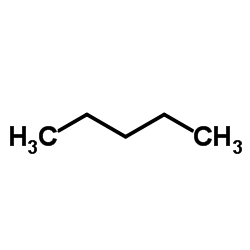 CAS#:109-66-0
CAS#:109-66-0 CAS#:354-58-5
CAS#:354-58-5 CAS#:14595-78-9
CAS#:14595-78-9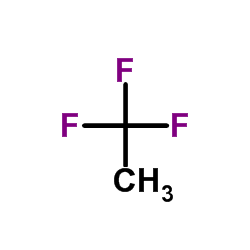 CAS#:420-46-2
CAS#:420-46-2 CAS#:75-68-3
CAS#:75-68-3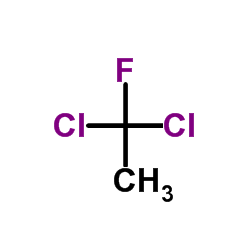 CAS#:1717-00-6
CAS#:1717-00-6 CAS#:75-38-7
CAS#:75-38-7 CAS#:75-72-9
CAS#:75-72-9 CAS#:43222-48-6
CAS#:43222-48-6
